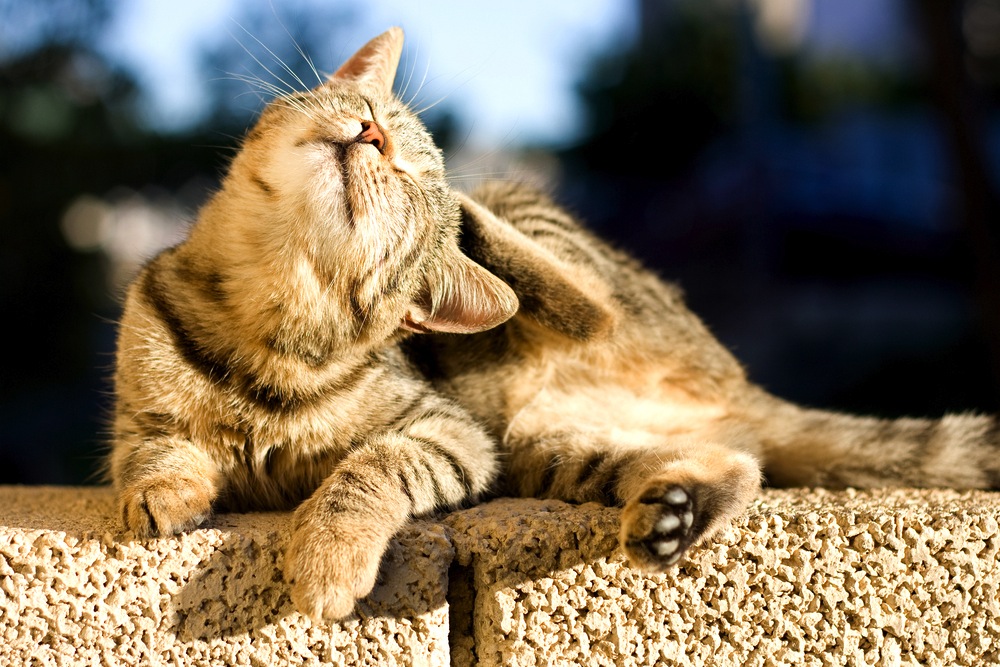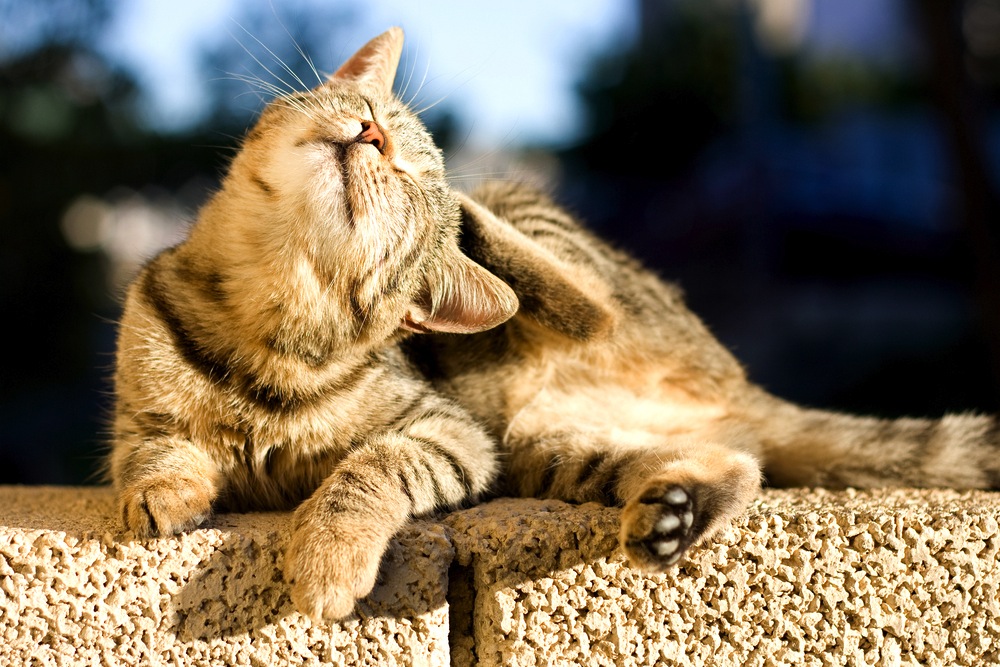
Vet Sarah Probert finds out there can be several reasons for itching in cats.
Many cats come in with sore patches on their skin. Sometimes the cause is obvious – if they have fleas, for example. Telltale signs are little black specks of ‘dirt’ they leave in the pet’s coat; if you place it on white tissue, it goes red… because it is in fact flea poop, which contains a lot of blood!
If a cat has an allergy to flea saliva, the bites become red and itchy. The cat then licks and scratches them and makes them inflamed and often infected. We often don’t see fleas because the cat is so hot, the flea won’t actually live on it. The only way to stop fleas is an effective product, used monthly. If your pet has had fleas, a house spray is essential to prevent them hatching out again – statistics suggest only 5% of fleas are on your cat… the rest are hiding in the house.
Cats can also get allergies to dust mites, foods and pollens. Allergies are impossible to cure and must be managed. If your cat has long-term allergies which are not fully controlled, they can get sores, which look like raised, pinky-red ‘plaques’ where the skin becomes damaged from excessive licking. These can be on the upper lip, legs or belly, and can be tricky to treat. Diet trials can help and you may be able to reduce the itch with prescribed anti-histamines, bathing or topical products.
Cats can also over-groom through habit or stress. This leads to similar plaques as with allergies, but usually starts with fur loss on the belly and the backs of the legs. If your cat starts pulling their hair out, look for the trigger. Often it is a change in circumstances; a new addition to the family, a house move, or after a cattery stay. There are products that can help stressed cats, and we often recommend sprays and plug-in diffusers, as well as natural calming additives for food.
Vets often use steroids to treat allergies in cats as one injection can last a month or so – breaking the cycle of licking and giving us time to implement other treatments. However, there is a strong link between steroids and feline diabetes, so even if your cat responds well to treatment, it’s important to be aware of the risks for repeated use – managing a diabetic cat can be very challenging.
So always treat for fleas first to be on the safe side. If that fails, or if your pet is harming itself through licking and scratching, veterinary advice is advisable… and sooner rather than later.






